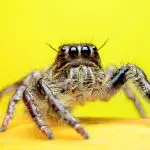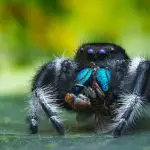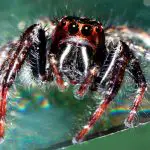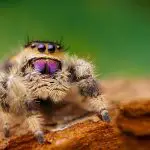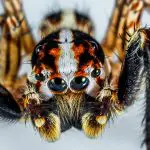Last updated on June 21st, 2023 at 08:55 am
Do jumping spiders need water? Like all living things, they do need fresh water on a daily basis, and can quickly become dehydrated. Keep reading to learn more…
Like all living things, jumping spiders do need water. In fact, they are quite sensitive to humidity levels, and will quickly succomb to dehydration if kept too dry. Nonetheless, they don’t need a lot of water, or even a large water bowl. Misting them daily and providing a small water dish is more than enough.
Do jumping spiders need water dishes?
If you’re considering getting a jumping spider as a pet, you may be wondering if they need water dishes. Captive Jumping spiders get their water from food, humidity, and the mist in their enclosures.
These three sources must be balanced in order to keep your spider hydrated and healthy. Small bowls can be as simple as a bottle cap. Be creative! Small water dishes can provide a direct source of water and contribute to the humidity level in their enclosure. Keeping a small water dish will prevent them from drowning since you can put sponge or pebbles in the bottom of it.
The average jumping spider will feed about once or twice a day. Spiderlings feed only once a day, while adults and males feed more often. Older spiders can go for long periods of time without feeding. To learn more about feeding habits and diet, keep an eye out for their behavior. Remember, jumping spiders need plenty of water to survive, so you should monitor their humidity and water daily.
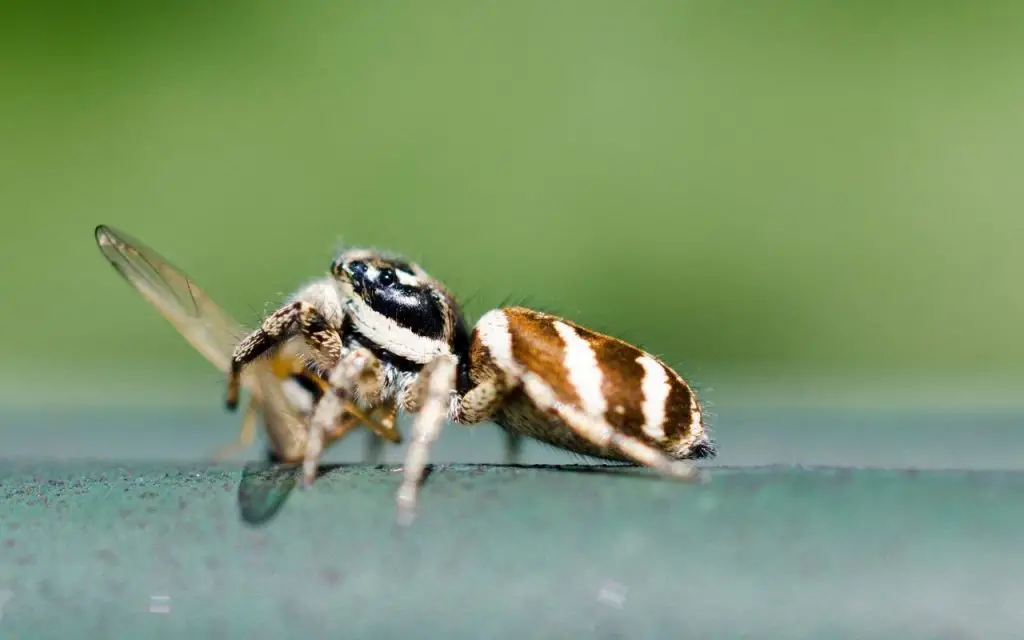
What do jumping spiders drink?
One question you might be thinking, “What do jumping spiders drink?”, is a recurring one among owners of these amazing creatures. The answer is simple and reveals some fascinating facts about them.
Most wild Jumping spiders get water from condensation and rain. Two species, an ant-mimic from the genus Peckhamia, and another jumping spider called Bagheera kiplingi, also feeds on plant nectar and juices. They get the substances by piercing certain plants with their fangs. This makes them the world’s only omnivorous spiders!
For captive jumping spiders, the answer depends on how you keep your pet’s enclosure. Although they can drink from a small bowl, they prefer to drink from a mist spray.
Keeping your jumping spider’s enclosure moist will prevent dehydration and help you provide a healthy habitat for your animal. Jumping spiders usually don’t drink water directly from the container, so it’s better to keep its enclosure moist, but don’t drown it either.
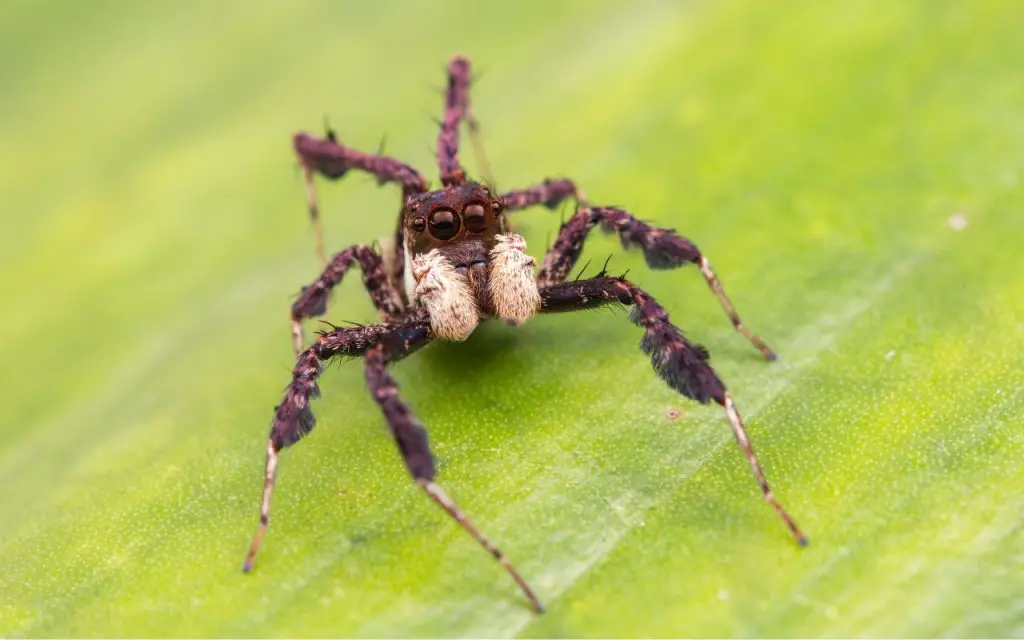
How often do jumping spiders drink water?
A jumpin’ spider will generally drink every day – but you may not always see it. Don’t be fooled: they need water of some kind every single day. Like all spiders, they are very vulnerable to dessication (drying out).
Be sure to pay attention to your jumping spider’s level of activity. If it’s getting sluggish something may be wrong. They do need to drink water to survive, so you must remember to give them the correct amount of water. At the same time, ventilation is also important so don’t forget some air holes or mesh in the top of their enclosure.
When the temperature outside is high, spiders can quickly suck up water. In addition, you can give your pet a mist spray. This way, you don’t have to worry about the spider falling to the bottom of the enclosure.
Providing your pet with water regularly is vital. Remember, water evaporates faster in summer and in winter if central heating is on, so keep an eye on the humidity level of your home. If you’re not sure, you can use a medical dropper or a syringe without a needle. Then, wait patiently while your jumper drinks water. One to three tiny drops is usually sufficient.
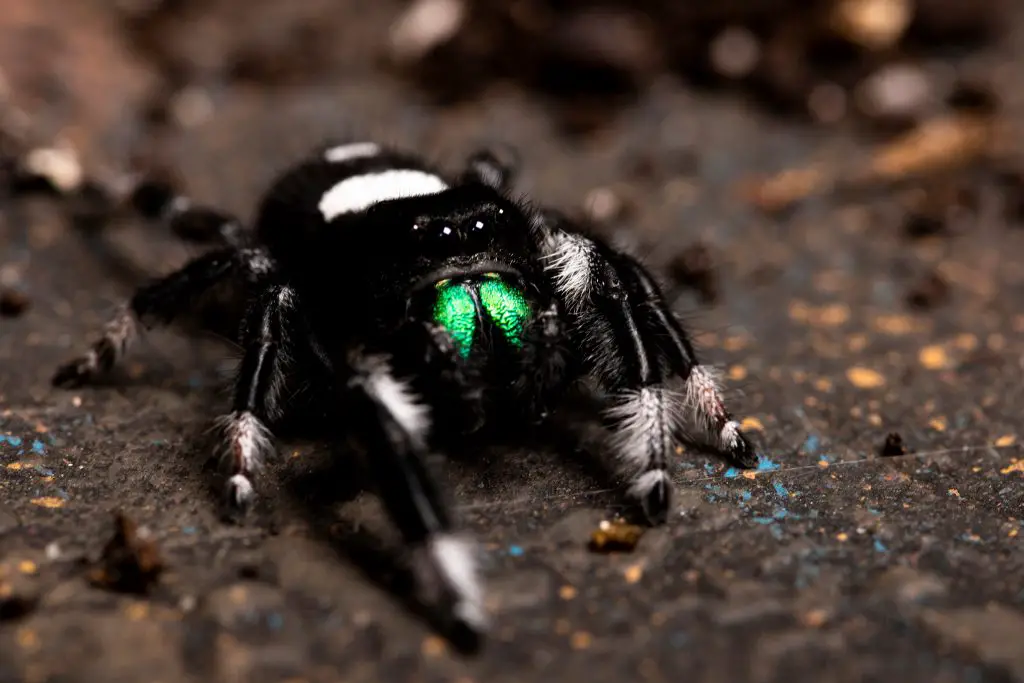
What do jumping spiders need in their enclosure?
When it comes to taking care of jumping spiders, their habitat should be small and breathable. The enclosure should be made from non-toxic materials and have enough vertical space for your spider to climb.
You should also provide adequate ventilation, so that they don’t overheat. You can use plastic or glass, but make sure that it has adequate airflow. You should also line the enclosure with a moisture retaining substrate to keep the humidity levels moderate.
Another important element of a jumping spider enclosure is the right temperature. They prefer a room temperature of 28-32C. In most homes, this temperature is achievable without any specific heat source. If your pet gets too cool in the winter, the easiest solutions is to put a storage heater in the room – but not too close to the enclosure.
Check out the three main things you’ll need for their care below:
1. Substrate
Again, keep in mind the fact that the substrate should be good at maintaining humidity. Low humidity is the leading cause of death in pet spiders! Good examples include:
2. Decorations
3. Prey! Ok, so it’s not part of the enclosure, but it’s pretty important!
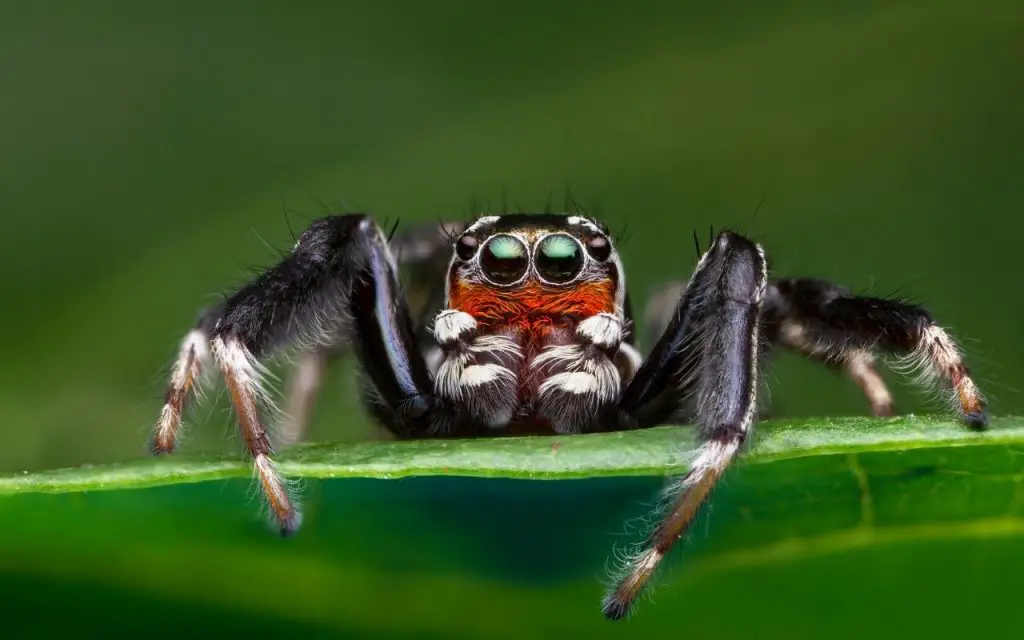
Are jumping spiders easy to take care of?
Are jumping spiders easy to care for? You may also wonder, as they are brightly colored, if you should be wary of handling them. The good news is that they don’t require much care and they are completely harmless.
All they need is a misting from a spray bottle every day and a decent enclosure. Their main food source is insects and they are for the most part very tolerant of being handled. Some even seem to watch their human owners with curiosity.
Despite being less long-lived than many tarantula species, female jumping spiders can live up to three years if they are taken care of properly.
Female jumping spiders lay eggs. Once they have laid eggs, they will become aggressive and overprotective of the eggs. Don’t disturb them during this time, as they may bite you. Just be careful not to disturb them.
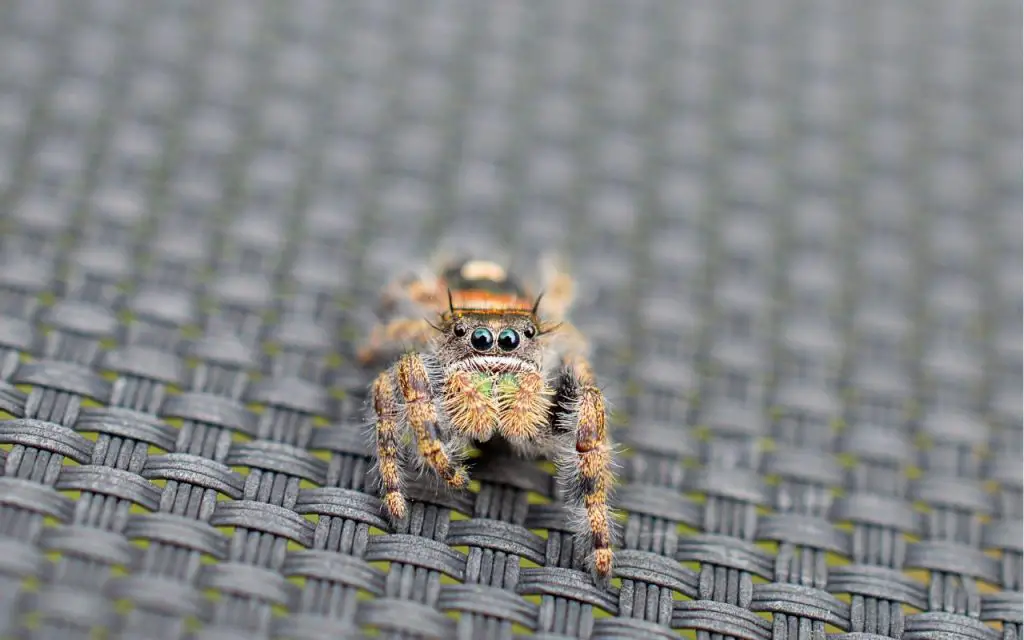
Key points to remember about jumping spiders and water
- Most of the species of jumping spiders available in pet stores come from the south-eastern United States. This means that in their natural habitat they are used to high ambient humidity at all times.
- The main reason pet arachnids die is from incorrect humidity – this is just as true for small spiders as it is for tarantulas. Whilst most keepers are aware of how important it is to provide a safe environment and enough food, many are still unaware of just how critical humidity is. Young spiderlings in particular need constant high ambient humidity, or will dry out and die within a day.
- The best way to maintain good humidity is by providing a water-holding substrate, such as tree bark or even paper towel. Coco fiber like Eco Earth is even better. Just bear in mind that young spiders are harder to see on natural substrate until they reach a certain size.
- Always avoid placing your pet’s enclosure in direct sunlight, especially if you decide to use a mason jar (these basically turn into ovens if the sun hits them!).
- First-time spider owners often think they need a heat mat for these little creatures, but this website does not recommend it unless you live in a very cold house (ie less than 65F). In general, heat mats seem to just dry spiders out unless attached to the side of the enclosure and monitored VERY closely.
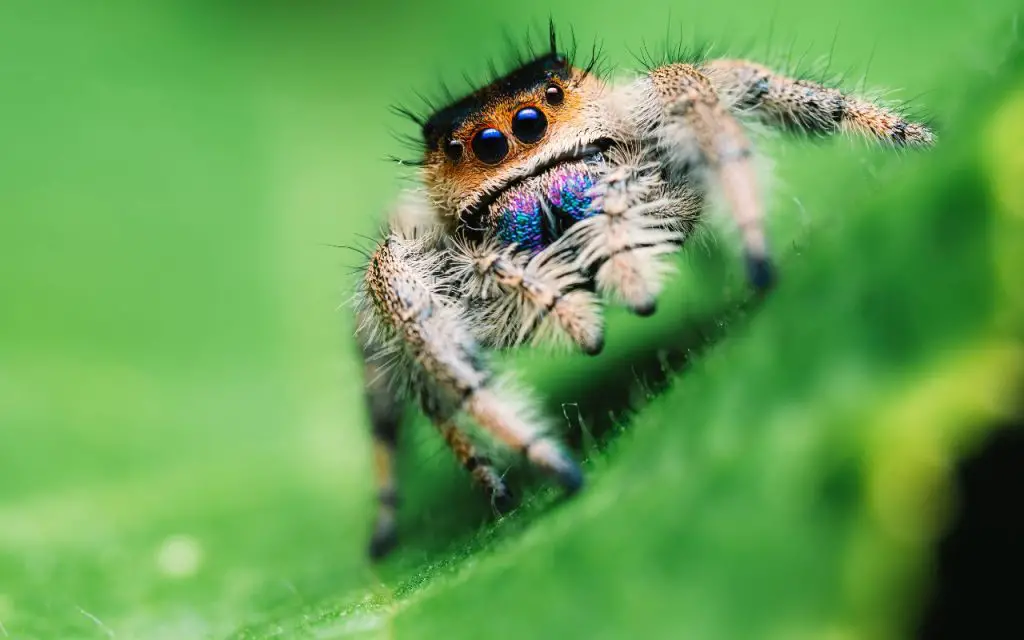
Give them just a little more care than other arachnids…
The different species of jumping spider vary in mass, but are all tiny pets. This means they will always dry out faster, and need slightly more regular care than larger types of spiders. It’s not a big deal, but it may mean misting daily, rather than every few days, and offering smaller feeder insects like pinhead crickets or flightless fruit flies almost every day.
These little arachnids are now some of the most popular pet spiders because they make good pets: don’t be put off by the fact they need slightly more care than most tarantulas when it comes to humidity!
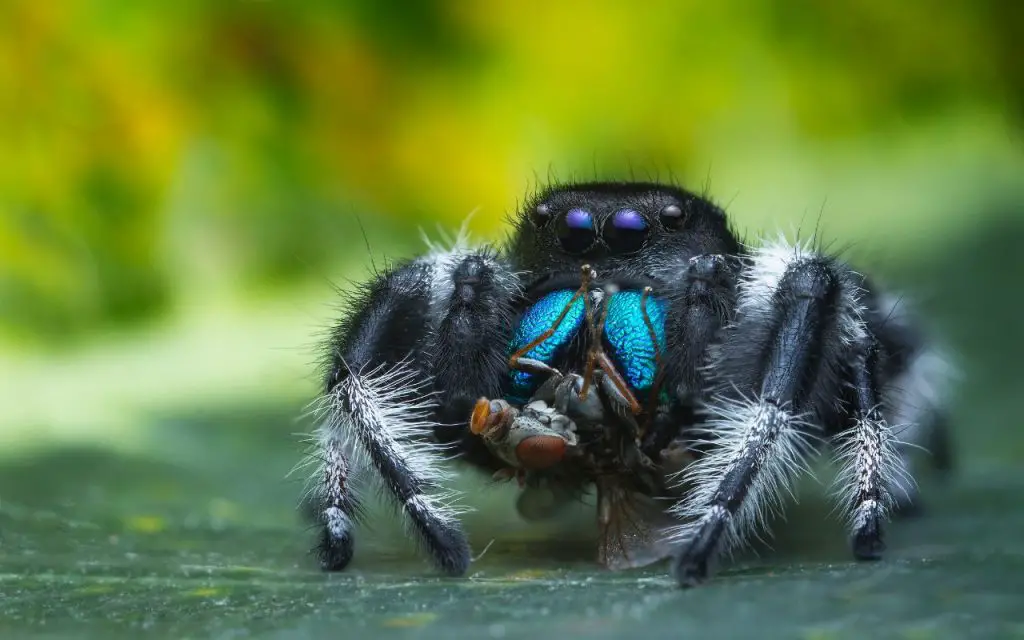

 The Bio Dude Bioactive Substrate
The Bio Dude Bioactive Substrate Repti Earth Coco Coir bedding
Repti Earth Coco Coir bedding Fake vines and plants
Fake vines and plants Leaf litter
Leaf litter Josh’s Frogs Drosophila hydei fruit fly culture
Josh’s Frogs Drosophila hydei fruit fly culture